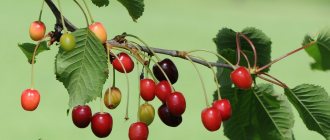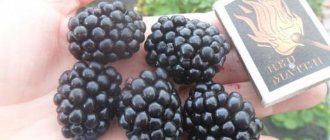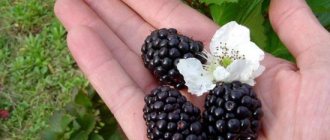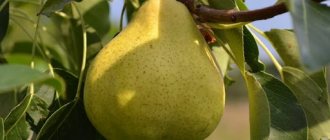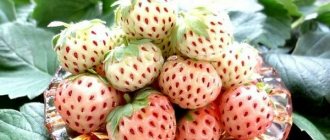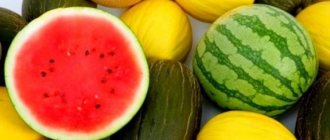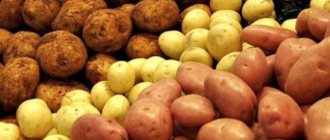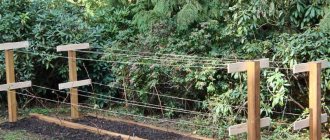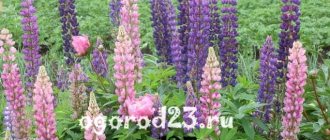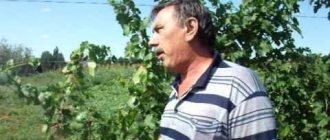Loading…
Loading…
In recent years, blackberries have become increasingly popular, and in many summer cottages they are given no less space than the long-known and well-known raspberries. And such attention is well deserved, because garden blackberries, photos of varieties and descriptions of which are striking in the large size of the berries, are not only productive and tasty, but also quite easy to care for.
The Americans have long been the trendsetters of the world “blackberry fashion” and the leaders in growing this berry. It is not surprising that most of the modern varieties are the creations of scientists and enthusiasts from the USA, who use different types of blackberries in breeding work.
Types of blackberries: photos and descriptions
In most of Russia and Europe, wild plantings of this perennial shrub are formed by blackberry (Rubus caesius) and bushy blackberry (Rubus fruticosus). However, there are several other species whose berries are edible and whose plants share common characteristics.
For example, the giant blackberry from Armenia (Rubus armeniacus) shown in the photo, sometimes called Himalayan, has long been widely cultivated in the USA and Europe. The reason for the popularity of the shrub was simple - large, massively ripening berries with a sweet dessert taste. But the view also had a significant drawback. This crop seemed very thorny, and when the thornless blackberry (Rubus laciniatus) appeared, it was abandoned.
Today, on plantations on the North American continent and all over the world, varieties based on bushy blackberries and blue blackberries, as well as thornless cultivated forms, commonly known as Thornless, are grown.
In the most wild varieties of blackberries, the berries change color as they ripen from green to red or brown, and then to dark purple or almost black. At the same time, the skin of the berries, as can be seen in the photo of a gray blackberry, is covered with a coating that determined the name of the species and is absent in other varieties.
There are differences between the species in the structure of the bush and the appearance of the leaves. It is especially noticeable when looking at the cut blackberry, which is unique in its own way. This species has strongly dissected leaves along the edges, consisting of 5–7 parts, multi-berry clusters and creeping flexible shoots.
Bushy and gray blackberries are common species in Russia that can be found on forest edges, overgrown clearings, along ravines and on river banks. However, the plants found their way into the garden only thanks to breeders who created large-fruited and productive varieties of blackberries.
Planting blackberries in open ground
What time to plant
Growing blackberries is quite difficult, especially for an inexperienced gardener. However, the fruits of this crop are incredibly healthy and very tasty, so the effort put into mastering the unusual blackberry agricultural technology will not be wasted. Experts advise planting blackberries in open ground in the spring from the last days of April to the first days of May after the soil has warmed up well. However, autumn planting is not recommended for this crop. Blackberries prefer sunny places, which must be protected from gusts of wind. The fact is that wind can damage the foliage and fruits of the plant, as well as interfere with normal pollination. It is recommended to choose a site for planting not on a flat area, but on a western or southern slope, in this case the plant will be protected from the north and east winds. For such a crop, breathable, drained, nutrient-rich loam is best suited; it can also be grown on sandy loam soil. If it is planted on carbonate soil, the bush will lack iron and magnesium. Recommended soil acidity pH 6.
Before proceeding with the actual planting of the plant, it is necessary to ensure that the soil meets all the agrotechnical requirements of blackberries. It is recommended to begin site preparation in the autumn; all weeds must be removed from it, as well as pathogenic microorganisms and all pests destroyed. If the garden soil is systematically fertilized, then applying fertilizers specifically for blackberries will be unnecessary, since an overfed plant begins to actively grow green mass, which negatively affects fruiting. However, if another crop was grown on the site before blackberries, the soil may be severely depleted. In this regard, during the preparation of planting holes or furrows, the top nutrient layer of soil must be thrown aside. It must be combined with 10 kilograms of compost, manure or humus, 25 grams of potassium sulfate and 15 grams of superphosphate per 1 m2 of land. When planting blackberries, you will need to fill the root system with this soil mixture.
planting blackberries
Planting blackberries in spring
If you want to grow healthy, strong blackberries that will produce a rich harvest, then you should not neglect a single rule of agricultural technology for this crop. Special attention should be paid to purchasing a seedling. It is recommended to buy seedlings from nurseries that have been verified or have a good reputation. You need to choose annual seedlings that have a well-developed root system, 2 stems, the diameter of which should be more than 5 mm, and most importantly, pay attention to the fact that there must be a formed bud on the roots. The width and depth of the planting hole directly depends on the age and quality of the seedling. When choosing a site for blackberries, you should take into account that there should be at least 100 centimeters from it to any other garden plant or building, and if possible more. The distance between the plants themselves directly depends on the method of cultivation (bush or strip) and on the ability of the variety to form shoots. If the bush planting method is used, then 2 or 3 seedlings that have a low level of shoot formation must be planted in one planting hole at once, and the layout of the holes should be 180x180 centimeters. Most often, the strip method of planting blackberries is used for varieties with enhanced shoot formation. In this case, plants are planted in a furrow in a continuous chain, while a distance of 100 cm is maintained between seedlings, and the row spacing should be 200–250 cm.
The plant is placed in a groove or hole, and then its roots are carefully straightened, directing them in different directions. Then the root system should be sprinkled with a nutrient soil mixture (see composition above) so that the bud located at the base of the shoot is buried 20–30 mm into the soil. It should also be noted that the hole or furrow should not be filled to the level of the surface of the site. It is necessary that something like a recess or hollow remains, and its surface should be several centimeters below the level of the site. In this case, snow, melt or rainwater will accumulate in the resulting hollows or recesses, which will significantly reduce the number of irrigations. The soil around the planted plants needs to be compacted, then they are watered using 3–6 liters of water per 1 bush. After the liquid is completely absorbed into the soil, the surface of the holes or hollows should be covered with a layer of mulch (manure or peat manure compost). Planted seedlings must be shortened to a height of 20 centimeters above the surface of the site, while the fruit branches must be cut off completely.
Varieties of garden blackberries
Since several varieties were used to breed varietal berries, perennial shrubs have different structures and types of fruiting. Like their wild ancestors, many varieties have retained their creeping form. Plants with long shoots, up to several meters, are grown on trellises, which allows you to get the highest possible yield from one bush.
Bush varieties of blackberries are more similar to raspberries. Such specimens bear fruit on two-year-old shoots that retain an erect or semi-lodging form. The height of the plants reaches 2–2.5 meters and needs pruning.
The development of varieties of thornless blackberries has made it easier to care for plantings. Such varieties can be easily identified by their name, to which the prefix Thornless is added, that is, “without thorns.”
Blackberries have a long growing season. On the one hand, this allows the plant to protect itself from spring frosts and return colds. But on the other hand, the harvest ripens late, and in the northern regions the ovaries, never fully ripened, go under the snow. Remontant blackberries, which bear fruit throughout the season, solve the problem.
Today, gardeners have at their disposal many interesting varieties of blackberries that produce large dessert berries. All that remains is to study the photos and descriptions of blackberry varieties and, based on the climatic conditions of the region, choose the appropriate one.
Reproduction methods
Blackberry propagation methods depend on its type.
Reproduction by root suckers. The simple path is suitable for bushes that produce shoots. The offspring, which have formed close to the mother specimen and are 10 cm high, are planted in June so that they have time to take root before the cold weather.
Reproduction by apex. The technique is suitable for climbing varieties with long elastic strands. The branches are bent with their tops down to the moist soil, after 25 days they take root.
Reproduction by horizontal layering. The method is used for climbing varieties. In August, annual shoots are buried to a depth of 20 cm, leaving the tops on the surface. About 60 days later, the root system and young shoots will form. They are dug up, divided, and planted in a permanent place.
Reproduction by dividing the bush. The technique is suitable for blackberries without shoots and vines. The dug out mother bush is divided into separate parts with roots and planted on the site.
Propagation by pieces of roots. Root cuttings 10 cm long are prepared in spring or autumn. They are laid out on the surface of the soil and sprinkled with loose soil. Shoots appear in a week.
Propagation by stem cuttings. In autumn, annual shoots are divided into cuttings. They are buried in the area until spring. With the first warm spring rays of the sun, the cuttings are dug up, the cuts are renewed, laid out in rows, and covered with earth. When bushes with 2-3 true leaves are formed, the cuttings are pulled out of the ground. Each cutting will have 2-3 young plants with roots. They are separated and planted in containers. When leaves appear on the seedlings, they are planted in a permanent place.
Propagation by green cuttings. In summer, green cuttings with two leaves are separated from the top of the mother bush and treated with growth stimulants. The bottom leaf of each cutting is removed, leaving a stump, and the top leaf is cut in half. The resulting cuttings are planted in containers and placed in a greenhouse. When new leaves form, the blackberries are transplanted to the site.
Reproduction in water by dormant bud. In the fall, cuttings with 2-3 dormant buds are prepared and placed in the cold. Towards the end of winter, the cuttings are taken out, turned over with the top bud down and placed in water. A bud covered with water will emerge from its dormant state and a young shoot with roots will form from it. It is planted in a pot of soil. A shoot with roots develops from a dormant bud, which is separated and planted. Then they lower the next bud into the water and wait for it to escape.
Propagation by seeds. Seeds germinate slowly. Before planting, the seeds are first scarified by soaking in a sulfuric acid solution. Then keep the seeds in melt water for 3 days, mix the seeds with wet soil, and put them in the cold for 60 days. After this, transfer the containers with seeds to a room with a temperature of +20°C and sow. They are planted in a permanent place when each seedling has formed 4 true leaves.
Blackberry Thornless Evergreen
The thornless variety of blackberry Thornless Evergreen was obtained thanks to the observed natural mutation of the dissected blackberry. As a result, European and American farmers at the beginning of the last century received an evergreen plant with excellent productivity, and also without thorns.
Although the 3-gram berries of the blackberry variety shown in the photo are smaller in size and weight than most new varieties, their quantity per cluster is unmatched. One inflorescence can contain up to 70 ovaries, which, after ripening, acquire a blue-black color, a delicate aroma and a pleasant sweet and sour taste.
The openwork, but rather dense foliage of this blackberry variety retains its vibrant color even under the snow, so the plant quickly resumes growth in the spring and blooms.
The plant has many advantages, including productivity, lack of thorns, frost resistance and the ability to transport berries. The main drawback, besides the small mass of the fruit, is the large seeds of the Evergreen Thornless blackberry.
Blackberry Black Satin
The thornless shoots of this variety of blackberries have a semi-creeping shape and form a powerful bush. Until the stems of the Black Satin blackberry reach 2 meters in height, the plant retains its erect appearance. As they grow, the shoots droop and reach 4–5 meters in length at the time of fruiting. The shiny, medium-sized berries weigh from 5 to 8 grams. The ripening of round or round-oval fruits occurs gradually, so the harvest is harvested many times.
Ripe berries have a sweet and sour refreshing taste that is universally useful.
Blackberry Natchez
In 2007, American scientists from Arkansas introduced a new variety of blackberries, Natchez. The peculiarity of the crop is the early ripening of large berries weighing 8–10 grams. Harvesting begins in the first ten days of July and continues until September. The glossy black berries of this variety have an oblong shape, small seeds, juicy pulp with a dessert taste and a bright aroma characteristic of the species.
The harvested crop is stored for several days without loss of quality and can be transported.
"Polar": the most unpretentious
It has an unusual taste - without astringency. Has a set of good qualities:
- gives a large harvest;
- unpretentious;
- undemanding to care;
- grows without supports;
- long ripening period. You can pick berries from July to September;
- resistant to pests and diseases;
- meets Russian climatic conditions.
These are not all varieties of blackberries on the market. But you can choose any of them and not look for others.
Each variety described above has been tested in Russian climatic conditions and will easily provide your family with tasty, healthy and beautiful berries.
Blackberry Reuben
Hybrid blackberry Ruben bears fruit on shoots of both the first and second years of life. The first harvest occurs in July, then the very large berries, weighing from 10 to 16 grams, ripen at the end of summer and are harvested until October. Remontant blackberries are distinguished not only by double harvesting of berries, but also by high yield.
Powerful bushes have an erect shape, do without support and tolerate frost well.
The best varieties for different regions of Russia
Gardeners want to grow blackberries everywhere. But when choosing a variety or hybrid, it is recommended to take into account the climatic characteristics of the region and the degree of compliance of the plant with them.
For the Middle Band
Agronomists recommend planting Agavam, Black Satin, Karaka Black, Ruben.
For the Moscow region
Ideal for the Moscow region: Apache, Aparacho, Brzezina, Doyle, Karaka Black, Lawton.
For cultivation in the Urals and Siberia
In the Urals and Siberia they bear fruit well: Polar, Eldorado, Gazda.
For the Leningrad region
In the Leningrad region, gardeners receive good harvests from: Brzezina, Doyle, Aparaho, Polar, Eldorado, Triple Crown, Darrow.
Navajo blackberry
Navajo thornless blackberry forms a large, upright bush one and a half to two meters high. The plant is unpretentious, requires minimal care and does not need support. The harvest of large, oval or round berries ripens in August, and its harvest lasts about another month. The mass of the purple-black berry is 5–7 grams. The fruits are tasty, sweet with a slight sourness.
The advantages of this blackberry variety are high yield, excellent taste and type of berries.
general description
Garden blackberries belong to the Rosaceae family and a subspecies of the Rubus genus. The plant is a shrub or semi-shrub vine. It has flexible stem-like shoots, the surface of which is covered with small, sharp spines. Because of this feature, the thickets of the crop are almost impenetrable, making it very difficult to pick the berries. But recently, through the efforts of breeders, several thornless varieties have been created.
According to the description, blackberries have a perennial rhizome, and the age of the aerial part does not exceed two years. If there is suitable support, the stems of this plant can climb up to a height of 2 m. The light green leaves with a serrated edge have slight pubescence on both sides and are divided into 3-7 parts.
The flowering period occurs from June to August, depending on the climate zone. Blackberries bear small white flowers that attract bees. After they wither, the time comes for the fruits to ripen. They are dark, almost black drupes with a bluish coating.
wild berry
The advantages of blackberries include not only its taste. This culture reproduces quickly and easily. Fruiting begins already in the second year after planting with proper care. Thanks to the late onset of flowering, the crop is completely protected from spring frosts.
But the berry also has its drawbacks. The bushes are covered with many small thorns, and the above-ground part is not sufficiently adapted to low temperatures. Therefore, full-fledged cultivation of blackberries is possible only in the southern regions of Russia. Although in recent years, breeders have also developed frost-resistant varieties.
There are the following types of blackberries:
- sundew with creeping shoots;
- blackberries themselves, which have straight stems;
- semi-creeping blackberry.
Sundews differ from other species in their large and juicy berries with excellent taste. But they have difficulty taking root in the gardens of our country due to the difficulty of care. Blackberries themselves have stems that grow upward. In intermediate semi-creeping varieties, the branches grow straight at first, and then they bend towards the soil.
Blackberry Triple Crown Thornless
Another American blackberry variety was created by Oregon breeders. A plant that produces stable yields forms a bush with semi-creeping stems up to 3 meters in length. To get the maximum benefit, Triple Crown blackberry shoots are placed on trellises or strong supports that can support clusters of large berries that ripen in the second half of summer.
The peculiarity of the variety is the resistance of the berries to elevated temperatures and transportation, the bright taste of the fruits and their consistently large size throughout the entire ripening period. On average, the yield per bush is about 10 kg of dessert berries, which do not change the taste even when grown without shading.
Triple Crown blackberries, like many American varieties, are not very winter hardy and need to be insulated.
Varieties
According to some estimates, more than 200 varieties of blackberries have now been created; according to others, there are half as many. The selection of this berry crop has been going on for at least 150 years. The first hybrids were obtained by American gardeners back in the 19th century. The most famous Soviet biologist I.V. also contributed to the diversity of blackberry varieties. Michurin.
At first, blackberry selection was aimed at creating large-fruited, productive plants that were adapted to frosty winters. In recent years, breeders have become interested in breeding thornless varieties and are experimenting with the timing of berry ripening. Now gardeners can choose blackberries that fully meet their conditions and bear fruit twice per season. The classification of varieties is very arbitrary. The same variety has the right to enter 2-3 groups.
For example, the time-tested Agavam variety is an early, winter-hardy, and shade-tolerant blackberry.
Early blackberry
Early blackberries begin to ripen at the beginning of summer: in the southern regions - at the end of June, in July in the north. The berries do not turn black all at once, but sequentially; harvesting usually lasts up to 6 weeks. Among the early varieties there are prickly and thornless, erect and creeping blackberries. Their common drawback is low frost resistance.
Natchez
The Natchez variety was developed 10 years ago in Arkansas. This is a large-fruited blackberry (the average weight of berries is up to 10 g), devoid of thorns. The shoots are semi-erect, 2–3 m high. The first berries ripen in June. They have a sweet, slightly astringent taste. The crop matures completely in 30–40 days. From one bush it is possible to collect about 18 kg of fruit. The frost resistance of the plant is low (withstands down to -15°C), and in winter it needs shelter.
Natchez blackberries produce a high yield of large berries
Ouachita
This is a very generous variety of American selection. The bushes are powerful, vertical (height no more than 3 m), without thorns. The fruits are medium-sized (6–7 g), ripen in June-July. The yield, according to the authors of the variety, is up to 30 kg per bush. Disadvantage - it can hardly withstand low temperatures (maximum up to -17°C). It is difficult to cover the bushes; they bend down poorly.
Blackberries of the Ouachita variety are very productive, but the berries are not very large
Giant (Bedford Giant)
Blackberries of the Gigant variety are grown on a production scale. This is a subshrub with climbing stems densely studded with thorns. Dense and very tasty berries of medium or large size (7–12 g) begin to ripen by July. This variety is characterized by average frost resistance and winters well under light cover.
Giant blackberries are often grown for sale.
Columbia Star
This is one of the newest American varieties that has not yet gained popularity. Columbia Star is an early, thornless blackberry with long (about 5 m) shoots, which make caring for the plant somewhat difficult. The creators of the hybrid promise high yields and very large fruits (up to 15 g). This blackberry tolerates heat and drought, but is afraid of severe frosts (below -15°C). Experts note the refined taste of the berries.
Columbia Star - a new promising variety
Chačanska Bestrna
A variety of Polish selection that produces up to 15 kg of yield per bush. It is convenient to pick berries from semi-creeping shoots; they have no thorns. The juicy fruits are large and sweet and sour in taste. Their disadvantage is their short shelf life. Blackberry Chachanska Bestrna is unpretentious, tolerates heat, drought and cold down to -26°C without problems, and rarely gets sick.
Chachanska Bestrna - a variety with juicy berries that are difficult to store
Osage
Gardeners celebrate the Osage variety as the blackberry with the most exquisite taste. However, its yield is not too high; 3–4 kg of berries are harvested from one plant. The bushes grow vertically, their height is up to 2 m, the shoots are thornless. The berries are oval-round, medium in size. Resistance to frost is weak (cannot withstand temperatures below -15°C), so you can’t do without shelter even in the south.
Even in the southern regions, Osage blackberries need to be covered for the winter.
Karaka Black
This is a new variety of early climbing blackberry, bred by New Zealand biologists. The elongated fruits (their weight is 8–10 g) look original and have a characteristic sweet and sour taste. Karaka Black bears fruit for a long time, up to 2 months, each bush produces a harvest of up to 15 kg. The disadvantages of this blackberry are thorny shoots and low resistance to frost.
Read more about the variety in our article: Blackberry Karaka black is a champion in large fruit.
Karaka Black blackberries are elongated and resemble a cob.
Video: Karaka Black blackberry fruiting
Medium ripening varieties
These berry bushes produce a harvest in mid to late summer. The taste of fruits often depends on the weather. In rainy summers they will be more acidic; in hot weather they can lose moisture and dry out.
Loch Ness
Loch Ness is considered one of the best in taste among low-maintenance varieties. This semi-creeping blackberry is thornless and the bushes are compact. Loch Ness is harvested from the end of July. It is consistently high; with good care, one plant produces about 30 kg of delicious berries with a slight sour taste.
Loch Ness - a non-capricious and productive blackberry variety
Loch Tay
This non-thorny hybrid is distinguished by sweet large (up to 15 g) berries with dense skin, which are almost not damaged during transportation. But the yield of the variety is not the highest, about 12 kg per plant. The flexible shoots of Loch Tay blackberries are long, about 5m, so they will need support. And before winter, the lashes will have to be removed to cover them. Frosts below -20°C are destructive for this variety.
Loch Tay is distinguished by its dense and shelf-stable berries.
Waldo
This blackberry variety has been time-tested and has received the best recommendations from gardeners. Shrub without thorns, creeping, compact, very convenient for small areas. Medium-sized (up to 8 g) berries ripen in July. Each bush yields a harvest of about 17 kg. Frost resistance is average; in cold climates shelter will be required.
Waldo is a compact blackberry variety that produces high yields
Kiova
The variety is distinguished by its huge berries. The weight of individual ones reaches 25 g, and the harvest, ripening in July-August, reaches 30 kg per bush. But the straight shoots of this blackberry are covered with sharp thorns. This plant can withstand frost down to -25°C, but in northern climates it needs shelter on the eve of winter.
Kiova - the largest-fruited blackberry variety
Video: large-fruited blackberry variety Kiova
Late varieties
Blackberry varieties whose berries ripen late are, as a rule, unpretentious and will not require significant effort from the gardener. They are good because the harvest ripens by the end of summer, and sometimes at the beginning of autumn, when other berry crops are already resting. But in the northern regions this is not always convenient. Sometimes blackberries do not have time to reach ripeness before the first snowfall.
Texas
The author of the variety is the Soviet naturalist I.V. Michurin. He himself called his creation “blackberry-shaped raspberry.” The crops are similar in the structure of the leaves, the ripening period of the berries and their taste.
The variety Texas is named after the American, but it is a blackberry of Russian selection
This is a strong, creeping bush. The shoots are flexible, like those of melons, covered with large thorns, the leaves and stalks are also prickly. It is more convenient to grow the variety on a trellis. When ripe, the berries are dark crimson with a faint bluish tinge. The taste is something between raspberries and blackberries. The maximum yield in Texas is 13 kg per plant; the bush bears fruit for up to 15 years. The disadvantage of this variety is its low resistance to frost. Without protection, this blackberry will not survive the winter.
Oregon Thornless
American variety. It has thornless, creeping stems growing up to 4 m, and beautiful leaves. This blackberry is grown on a support, and sometimes used to decorate garden buildings. Medium-sized berries (7–9 g) ripen at the end of summer. Approximately 10 kg of crop is harvested from one bush. Oregon Thornless can withstand temperatures down to -20°C, but it would be safer to cover it on the eve of winter.
Oregon Thornless - a very decorative blackberry
Navajo
Another variety from American breeders. Straight shoots (average height - 1.5 m) grow without support and are devoid of thorns. The sweet-sour berries are small (5–7 g) and ripen in August-September. Up to 15 kg of fruits are collected from each bush. The plant does not require care, but its winter hardiness is low.
Navajo - a variety with vertical shoots without thorns
Triple Crown Thornless
The variety was created by gardeners from Oregon. This is a semi-cresting blackberry, its flexible shoots stretch up to 3 m. There are no thorns. The berries are of medium size, the yield is approximately 10 kg per bush. Triple Crown blackberries tolerate heat and drought well, but need protection from frost.
Read more about the variety in our article - Blackberry variety Triple Crown: Triple Crown of Abundance.
Triple Crown variety native to Oregon
Chester Thornless
This variety has semi-clinging, compact and thornless bushes. The berries are relatively small (5–8 g), but the yield is above average. One plant produces up to 20 kg of fruit. Chester can be classified as a frost-resistant variety; it can withstand temperatures down to -25°C. But it still doesn’t hurt to cover these blackberries. In addition, the plant does not develop well in the shade and on low, marshy soils.
Chester in good conditions produces 20 kg of berries per bush
Thornfree
One of the most productive varieties of blackberries without thorns. According to gardeners, it is possible to collect about 35 kg of berries from an adult plant. They ripen in August-September. The sour-sweet fruits are elongated, medium in size (up to 7 g). The Thornfrey blackberry bush is semi-climbing, the shoots are strong, approximately 5 m in length. The plant resists diseases, but does not tolerate cold well. Winters under cover.
Thornfree - a high-yielding and thornless blackberry variety
Blackberry Black Satin
Black Satin is a variety well known to many gardeners. This blackberry has drooping, stiff shoots free of thorns. Sweet, round berries of medium size, their weight is about 8 g. In a good summer and with careful care, it is possible to collect 20–25 kg of fruit from the plant; ripening lasts from August to October. The variety cannot withstand frosts below -20°C without protection. It also does not like stagnant moisture.
Recent Entries
5 working ways to use tar in the garden 7 indoor plants that help you get married even in adulthood Indoor plants that can bloom in trouble
Read more about the variety in our article - Blackberry Black Satin: record harvest easily and simply.
The berries of the Black Satin variety have a satin shine
Doyle
This blackberry is still little known among our gardeners. This is a new thornless variety that produces high yields late in the season. From each plant you can remove 25 kg of large (weighing approximately 9 g) berries. The shoots are semi-creeping and long, so they will need supports for growing. Doyle is tolerant of drought and hot weather; the plant must be protected from frost.
Doyle is a variety that our gardeners are just getting acquainted with
Shade-tolerant varieties
Most blackberries are not capricious in their choice of soil and adapt to any conditions. But the taste of many varieties depends on the location of the plant. Lack of light and rainy summers make the berries sour. Although there are varieties that ripen equally well in the sun and in the shade. True, such blackberries will not please you with the size of the berries.
Thornless Evergreen
This ancient variety, bred more than 100 years ago, at first glance, is inferior to the newest ones. Small, 3–5 g, aromatic berries ripen on the semi-creeping shoots of Thornless Evergreen blackberries. But there are up to 70 of them in each brush . Therefore, productivity does not suffer. In addition, Thornless Evergreen is one of the first thornless varieties and can retain foliage even under snow, and the plant begins to grow quickly in the spring.
Thornless Evergreen is one of the oldest blackberry varieties.
Agawam
This blackberry variety has proven itself to be shade-tolerant and frost-resistant. Its spiky straight stems grow up to 3 m. The berries are small, up to 5 g, ripe in July-August. Experienced gardeners collect about 10 kg of fruit from each bush. Agavam blackberries do without shelter in winter and even in severe frosts (down to -40°C) do not freeze. The disadvantage of this variety is its abundant basal growth, which causes a lot of trouble for gardeners.
Blackberries of the Agavam variety are universal, but their disadvantage is a lot of basal shoots
Frost-resistant blackberry
Erect and transitional varieties of blackberries tolerate low temperatures better than creeping ones. Among the frost-resistant varieties there are thorny and thornless, early and late.
Abundant
This blackberry is the result of the work of the legendary breeder I.V. Michurina. A variety with strong compact bushes, without root shoots. The shoots are semi-creeping, covered with curved thorns. The berries are oblong, medium in size (6–7 g), taste sweet and sour. Blackberry Izobilnaya is one of the most frost-resistant varieties of domestic selection. But in the northwestern regions of Russia it is better to cover the bushes with snow.
Blackberry Izobilnaya is adapted to the Russian climate
Ufa
Derived from the Agavam variety. It adopted the main characteristics from its ancestor, but is distinguished by higher winter hardiness. Ufa blackberries are successfully cultivated in central Russia. The berries of this variety are small (weight 3 g), but tasty. The yield is decent, up to 12 kg per plant.
Ufa blackberry is one of the most winter-hardy varieties
Polar
The variety, created by Polish breeders, produces tall and strong stems without thorns. Large berries (10–12 g) ripen early. Polar can spend the winter without protection in temperatures as low as -30°C. In this case, the yield will be up to 6 kg per plant. Gardeners have noticed that more significant harvests are harvested from bushes that have overwintered under cover.
Blackberries Polar are highly resistant to low temperatures and produce large fruits
Arapaho
This American variety, which appeared in the 90s of the last century, has already captivated gardeners around the world. Arapahoe is a thornless blackberry with an early ripening period. Very juicy berries of medium size (7–8 g) have the shape of a wide cone. The yield of the variety is above average. Arapahoe blackberries resist diseases well and can withstand temperatures as low as -25°C without protection.
The Arapahoe variety ripens early and rarely gets sick
Apache
Another variety from the USA entered the market in 1999. This blackberry combines the characteristics of the best representatives of different species. Powerful vertical shoots are devoid of thorns. The elongated cylindrical berries are large, 10 g each, sweet, and store well. The yield is so high that the variety is often grown commercially. Apaches are excellent at resisting disease and overwinter without problems.
Apache is a variety that takes all the best from the original species
Darrow
This variety from America can withstand frosts down to -35°C. The length of the prickly shoots is about 2.5 m. The berries are small, weighing up to 4 g. Their taste is initially sweet and sour. Overripe fruits acquire greater sweetness. The yield of the Darrow variety is average; an adult plant produces up to 10 kg of berries.
Darrow is the most winter-hardy blackberry variety today.
Remontant varieties
This blackberry produces two harvests per season. The first ripens on overwintered shoots in June-July, the second - at the end of summer on young shoots. However, in regions with harsh climates, growing remontant varieties is unprofitable. Early berries may die from frost, and later ones will not have time to ripen before the cold weather arrives.
Prime Arc Freedom
A new, vertically growing, thornless blackberry variety. The berries are high in sugar and very large, from 15 to 20 g. The harvest, as the creators of the variety promise, should be plentiful. The disadvantages of the variety include low frost resistance. Without protection, this blackberry does not overwinter.
Prime Arc Freedom - a variety that provides a double harvest
Video: fruiting of the remontant blackberry Prime-Ark Freedom
Black Magic (Black Magic)
Low (up to 1.5 m) remontant blackberries ripen in two waves: at the end of June and August. The berries are medium and large in size, very sweet. Productivity is low, from 5 kg per bush. The disadvantages of the Black Magic variety are the presence of thorns and poor winter hardiness.
Black Magic produces low but stable yields twice a season
Reuben
This upright hybrid with powerful thorny bushes can be grown without support. The first harvest is harvested in July, the second may be delayed until October. The berries are large, from 10 to 16 g, the yield is high. But Ruben blackberries do not tolerate heat above 30°C and frost stronger than -16°C.
Blackberry Ruben prefers to rest in extreme heat
Blackberry Chester (Chester Thornless)
Garden blackberries compare favorably with wild species in terms of berry size and yield. Some varieties, such as Chester blackberries, also do not have thorns, which greatly simplifies the cultivation and care of plantings. The culture is a late-ripening variety. The first berries, weighing from 5 to 8 grams, are ready for picking in mid-August; the last black, fragrant fruits can be enjoyed closer to October. The fruits store well, retain their shape and sweetness. Bushes with a wide crown are easy to care for and can easily be covered for the winter.
Recommendations for planting and care
Planting and caring for garden blackberries have some peculiarities. In order for the crop to actively develop and produce a rich harvest, it is necessary to comply with some requirements.
Rules for choosing a landing site
The basic rule is good quality soil. The plant feels best on sandy and loamy soil. In addition, the soil must be well drained. The roots of the bushes need a sufficient amount of oxygen.
Growing garden blackberries requires finding a suitable position. Only in full sun will blackberries be sweet and tasty.
When choosing a good place for blackberries, you need to take into account: the bushes bear fruit optimally and produce rich greenery in well-lit areas. But they must be reliably protected from the wind.
Attention! It is recommended to plant the crop from cuttings. The optimal time for this is spring or autumn.
Comfortable and beautiful garter, correct pruning of the bush
There are several options for blackberry garter. But the most beautiful way is the fan one. For this you will need to prepare a stake. Its average size is 2 m. The technology is quite simple:
- The stake is driven between two adjacent bushes.
- One shoot is taken from the right bush.
- The second one comes from the left side.
- They should be placed between each other like a fan.
This method is good because it allows you to beautifully arrange the crop and provides maximum air access.
Equally important is the timeliness of pruning. This will ensure a rich harvest. Pruning is done twice a year. The first time is before winter to shorten young shoots and remove old lashes. In the spring, frozen areas are removed by pruning.
Caring for garden blackberries necessarily includes pruning, thanks to which the bushes quickly thicken and bear fruit.
Branches damaged by pests are cut out completely, as are weak green vines. They are removed at the root. Thick and strong young shoots are cut by ¼. You can't leave stumps. You need to cut above the kidney. It is best to leave 7-8 shoots for wintering.
In the first year, pruning of garden blackberries is not necessary.
In spring, the lashes should be felt. Brown, elastic branches with a healthy shine are left. Fragile, black and rough - removed.
Blackberry Karaka Black
By studying descriptions and photos of blackberry varieties, you can not only evaluate the advantages and weaknesses of the culture, but also make amazing discoveries. For example, the new Karaka Black blackberry comes from New Zealand, and the plant’s genus includes not only its closest relatives, but also hybrids obtained from crossing blackberries with raspberries.
This method of scientists allows us to achieve the largest possible berries, enhance their delicate aroma and make the fruits more suitable for transportation. The weight of the elongated, tasty berry of the blackberry variety shown in the photo is about 10 grams. The skin is dense, black glossy. The pulp is juicy and tasty.
Due to gradual ripening, a consistently high harvest is collected over a period of 1.5–2 months.
Features of cultivation
Soil selection
When choosing soil, it is important to consider the acidity level of the soil; soil with a neutral level is best. The soil should be saturated with nutrients, loose, moist, and drained.
Location and lighting
Blackberries love warmth. The landing site is flat, bright, and protected from gusts of wind.
Temperature, humidity, watering
The roots of the crop are close to the surface of the earth, so the bush is watered systematically. Excess moisture harms the plant; mulching is carried out to maintain balance.
Fertilizers and fertilizers
Blackberries are fertilized with organic mixtures every year. As soon as the inflorescences and fruits are formed, the blackberries are fed with potassium fertilizers. Gardeners also feed the crop with mixtures containing various beneficial bacteria.
Transfer
The purpose of replanting is to renew the bush. Sometimes replanting is needed to “revive” the garden layout, or to thin out a voluminous bush.
Favorable times for transplanting brambles are spring and autumn.
Each period has advantages and weaknesses. Early spring replanting guarantees the survival of the shrub, but it is difficult to determine the optimal time for replanting when the soil has already “warmed up” from the winter cold, but the movement of water and nutrients in the plant has not yet begun.
The period of autumn transplantation is the last days of September or the beginning of October. In autumn, seedlings take root faster, but it is important to insulate them for the winter. For northern latitudes, transplantation in the fall is not available, and this is an impressive minus.
Trimming
Pruning is carried out in spring, autumn and summer.
- In the spring, pruning is carried out to remove black and dry shoots that died in winter. It is carried out before the young buds swell, at the end of April.
- In the fall, after fruiting, in mid-September, old shoots affected by pests and diseases are removed.
- Summer pruning is carried out in June-July. The side branches formed on the main shoots are removed into five buds or leaves. Due to the reduction in the number of buds, the taste of the berries improves and they become larger.
Pruning provides not only nutrition to young branches by removing old shoots, but also unhindered penetration of sunlight to the bush, protection from bacteria, an increase in the number of fruits, and strengthening of the bush.
Winter care
In autumn, branches that bear fruit are removed. Annual shoots that will bear fruit the next year need to be covered with non-woven material (can be tarpaulin, agrofibre, straw) for the winter. Bags of compost are placed on top of the material for warmth.
Description of the Loch Ness blackberry variety
A bright aroma, excellent taste with a tart tint and a beautiful, even shape of berries weighing from 5 to 10 grams in weight are the characteristic features of Loch Ness thornless blackberries, thanks to which the variety was highly appreciated by the British Royal Horticultural Society.
From each bush in a summer cottage you can get about 15 kg of ripe berries; under intensive cultivation conditions, the yield increases to 25–30 kg. At the same time, the fruits retain their appearance and taste for several days, which is important for commercial use of plantings. According to the description, Loch Ness blackberries are ready for harvest in mid-August.
Description of the blackberry variety Thornfree
One of the first thornless blackberry varieties, which is still deservedly popular among summer residents. According to the description of the variety, Thornfree blackberry forms a large semi-erect bush, consisting of shoots up to 5 meters long.
The rigid stems perfectly withstand the weight of oval berries weighing from 5 to 8 grams that ripen in August–September.
The variety is distinguished by its disease resistance and high yield.
One cluster can contain from 30 to 120 berries. The black, smooth fruits have juicy pulp and an excellent sweet and sour taste, but when fully ripe, the berries quickly become wrinkled and cannot be stored.
Diseases and pests
Blackberries can suffer from a huge number of diseases and parasites.
Fungal:
- anthracnose;
- didymellosis;
- septoria;
- phyllosticosis.
Treatment for fungal diseases is carried out with fungicides, for example, a mixture of an aqueous solution of copper sulfate (copper sulfate) and calcium hydroxide (slaked lime) or modern biological preparations, folk remedies. The area near the blackberry bushes is cleared of weeds.
Viral:
- mosaic;
- yellow mesh;
- ring spot;
- curliness.
With viral diseases, gardeners have a harder time, since there are no treatment methods. Prevention: do not let the branches of the crop dry out, buy seedlings from trusted nurseries, spray the plants with antiviral solutions.
Pests:
- mole cricket;
- May Khrushchev;
- aphid;
- mites;
- caterpillars
- stem gall midge;
- weevil.
Pests damage the root system, reduce productivity, weaken shoots, and attack flower buds and berries.
Control methods: traps, dusting bushes, planting green manure, collecting insects, removing damaged shoots, using chemicals.
Arapaho blackberry
American blackberry varieties are among the most popular in the world. The Arapahoe blackberry, discovered by Arkansas scientists in 1993, is one of a large series of plants named after American Indian tribes. Among the thornless varieties, this variety is considered the earliest.
Berries weighing up to 7 grams ripen in the second half of July. Sweet fruits with black shiny skin have a wide conical shape and juicy pulp, the taste of which is practically not affected by small seeds.
Highly productive bushes are not afraid of diseases and can withstand frosts down to –24 °C.
